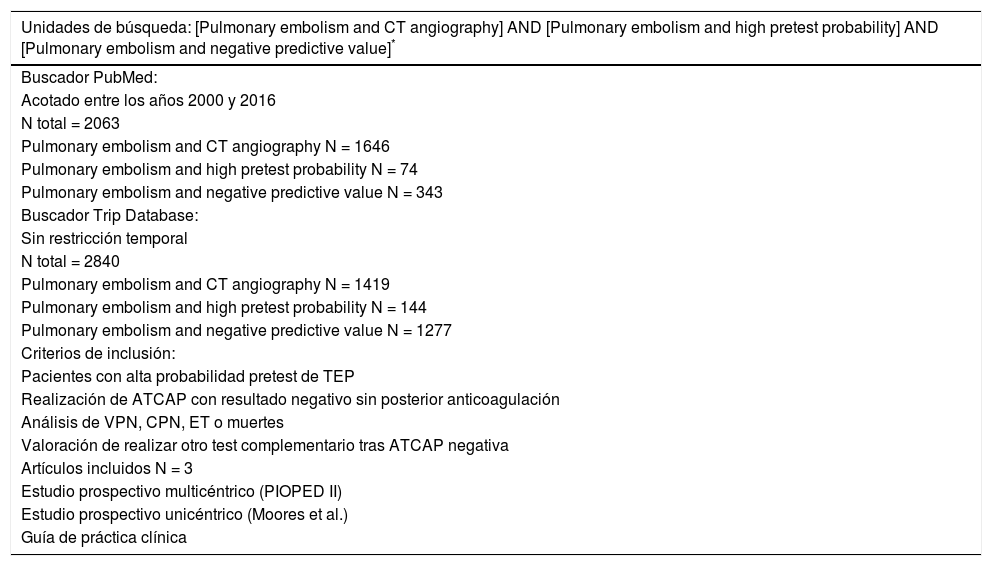Cuando la sospecha clínica es confirmada mediante una prueba diagnóstica, se puede administrar el tratamiento indicado. El problema se plantea cuando la prueba diagnóstica no confirma el diagnóstico inicial de sospecha, y más aún cuando la sospecha se fundamenta en reglas de predicción clínica validadas y es elevada. Esta situación se da hasta en el 40% de los pacientes con sospecha alta de tromboembolia pulmonar (TEP) aguda, por lo que se cuestiona si debe realizarse una angiografía por tomografía computarizada (angio-TC) de arterias pulmonares de manera sistemática. En este trabajo se ha revisado la bibliografía al respecto y se muestra la mejor evidencia sobre las recomendaciones relevantes en pacientes con alta sospecha clínica de TEP aguda y angio-TC negativa, así como los conceptos probabilísticos derivados del teorema de Bayes para tratar de discernir la actitud más apropiada.
When a diagnostic test confirms clinical suspicion, the indicated treatment can be administered. A problem arises when the diagnostic test does not confirm the initially suspected diagnosis; when the suspicion is grounded in clinically validated predictive rules and is high, the problem is even worse. This situation arises in up to 40% of patients with high suspicion for acute pulmonary embolism, raising the question of whether CT angiography of the pulmonary arteries should be done systematically. This paper reviews the literature about this issue and lays out the best evidence about the relevant recommendations for patients with high clinical suspicion of acute pulmonary embolism and negative findings on CT angiography. It also explains the probabilistic concepts derived from Bayes’ theorem that can be useful for ascertaining the most appropriate approach in these patients.
Artículo
Comprando el artículo el PDF del mismo podrá ser descargado
Precio 19,34 €
Comprar ahora










